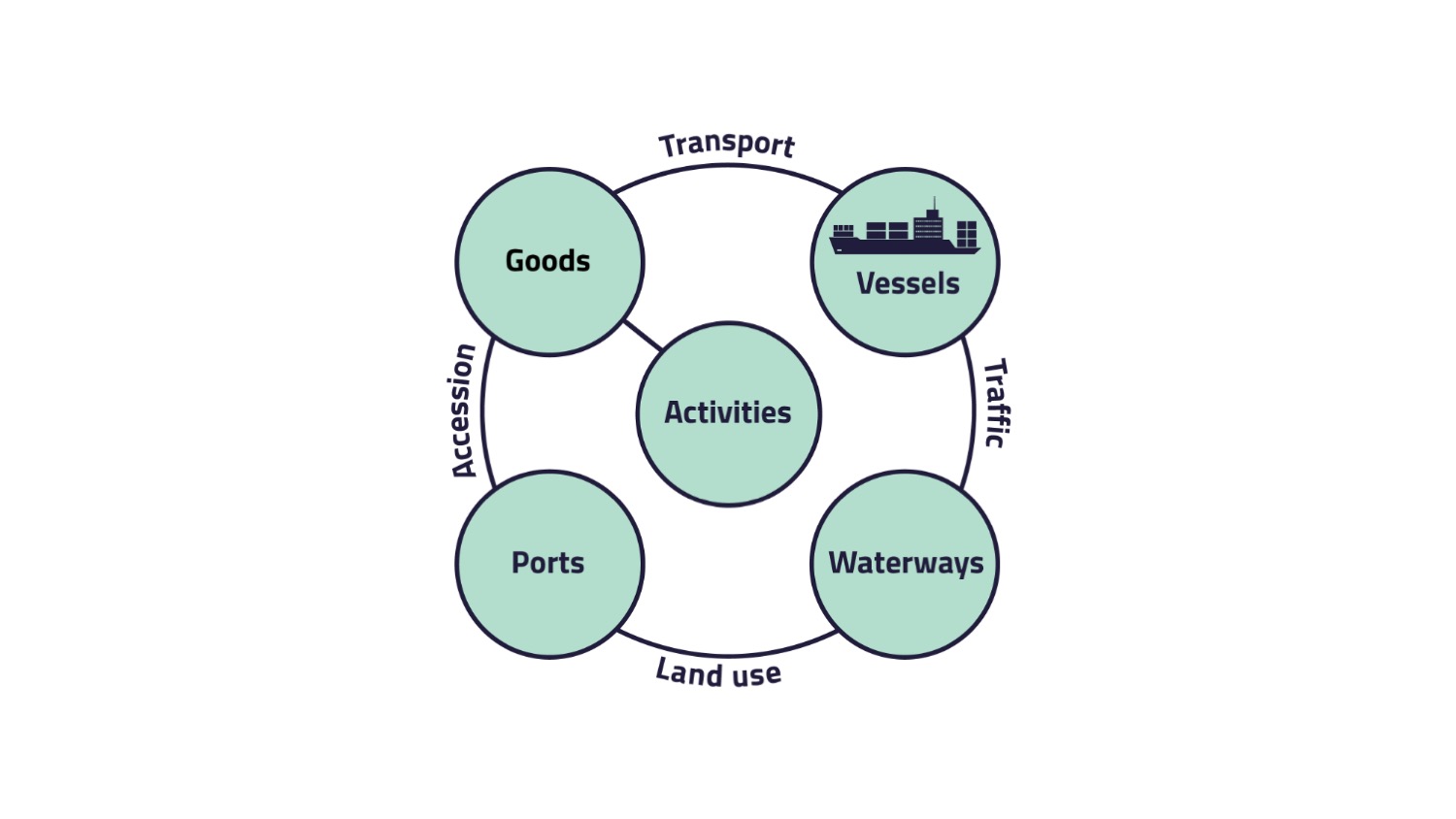Maritime Transport System
Maritime Transport System
In this section you will learn more about maritime transport and its
elements: activities, goods, vessels, waterways and ports. As in the
last sections, this section follows the structure of the conceptual system model of transport and traffic.
1. Introduction
In this section, you will learn more about the maritime transport system. You will get to know the activities that drive this system and the goods that are transported on waterways. You will then be introduced to the vessels used for transportation. In addition, the infrastructure of the waterways and its port facilities will be explained. Finally, the advantages and disadvantages of maritime transport will be highlighted.

Maritime transport is often responsible for the main carriage of goods and therefore for the long distance transport and is a part of a multimodal transport chain.
Multimodal transport describes the carriage of goods by two or more modes of transport.
Is the movement of goods in one and the same loading unit, e.g. container, or a vehicle by successive modes of transport without handling of the goods themselves when changing modes, it is called intermodal transport.
Combined transport is an intermodal transport with the majority of the journey in Europe being made by rail, inland waterways or sea and any initial and/or final legs carried out by road are as short as possible.
The figure "Maritime transport" shows the leg of the maritime transport between two ports with their connections to the hinterlands.
On the next page, the activities of the maritime transport system are presented to you.
Flämig, H., Sjöstedt, L., Hertel, C. (2002): Multimodal Transport: An Integrated Element for Last-Mile-Solutions? Proceedings, part 1; International Congress on Freight Transport Automation and Multimodality: Organisational and Technological Innovations. Delft, 23 & 24 May 2002. (modification of Sjöstedt 1996)
Schönknecht, Axel (2009): Maritime Containerlogistik. Leistungsvergleich von Containerschiffen in intermodalen Transportketten. Berlin, Heidelberg: Springer Berlin Heidelberg (VDI-Buch).